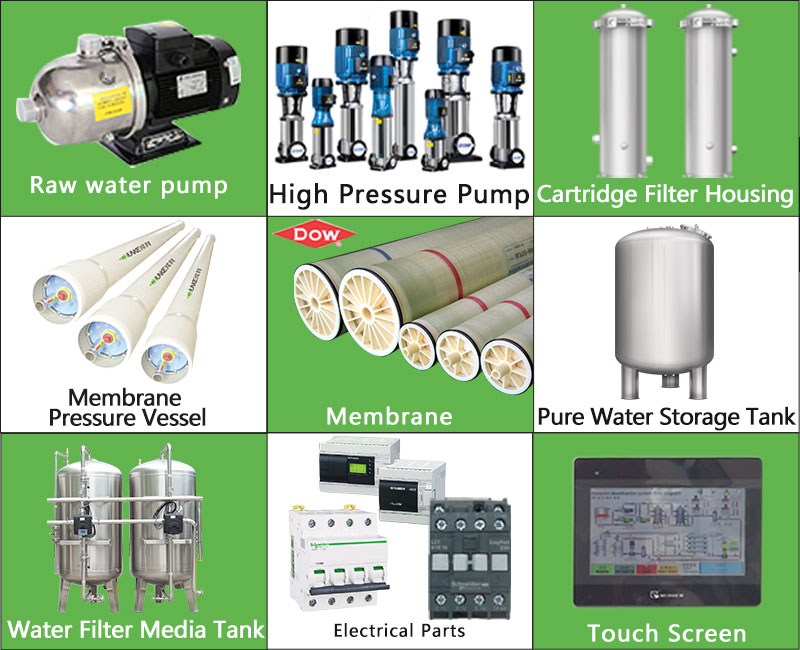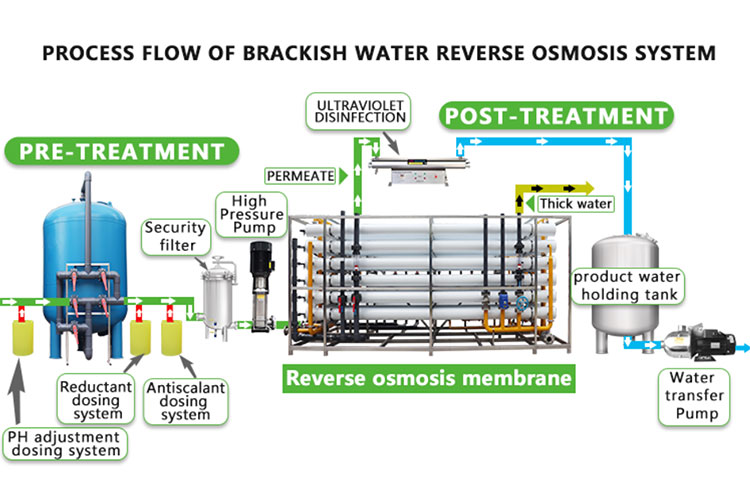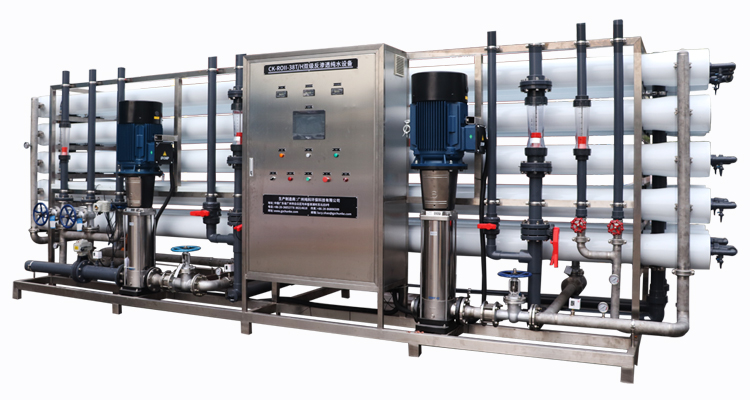What Does Reverse Osmosis Machine Do?
Reverse osmosis technology is an advanced technology widely used in the field of water treatment. It removes sediment, chlorine and dissolved solids from water through pre-filtration and semi-permeable membranes, providing people with purer drinking water.
In this news article, we will explore the role of reverse osmosis machine, and further discuss how to maintain the reverse osmosis system and its application value in life.

What is reverse osmosis machine?
A reverse osmosis machine, also known as a reverse osmosis system, is a device that removes sediment and chlorine from water through a pre-filter, then forces the water through a semipermeable membrane to remove dissolved solids. After the water passes through the reverse osmosis membrane, the degree of purification is significantly improved. Finally, the drinking water is further purified through a post-filter, and finally enters a special faucet for people to use.
The function of reverse osmosis machine:
The main function of the reverse osmosis machine is to remove impurities, dissolved solids, bacteria, viruses and other harmful substances in the water through a semipermeable membrane. This makes reverse osmosis systems a reliable drinking water purification technology. Through the pre-filter, large particles and sediments in the water are removed to prepare for the subsequent reverse osmosis process.
Reverse osmosis membrane is the core part of reverse osmosis machine. It removes dissolved solids as small as ions from water through filtration at the molecular level. This includes various salts, heavy metals and organic compounds. In addition, reverse osmosis membranes remove pathogens and microorganisms, ensuring the safety and purity of water.
After being treated with a reverse osmosis membrane, the water usually goes through a post-filter to further improve water quality. Finally, the purified drinking water is available to users through dedicated taps.
The application value of reverse osmosis machine in life
The application value of reverse osmosis systems in life is reflected in many aspects such as providing high-quality drinking water, saving bottled water, improving the quality of cooking and beverages, and being economical and affordable. It provides many conveniences for people's daily lives.
The reverse osmosis system can remove impurities and pollutants in water, provide pure drinking water, and protect people's health.
Reverse osmosis systems can reduce reliance on bottled water, reduce the generation of plastic waste, and protect the environment.
Using reverse osmosis water can reduce mineral scale buildup in household appliances, extending their life and improving performance.
Reverse osmosis water excels in cooking and beverage preparation, enhancing the taste and quality of food and beverages.
Although the initial investment in a reverse osmosis system may be higher, over the long term it can be economically beneficial in reducing bottled water purchases and appliance repair costs.

Application of reverse osmosis machine in industrial field
Reverse osmosis technology is widely used in electronic manufacturing. The production of chips, semiconductors and other electronic components requires high-purity water, which places strict requirements on reverse osmosis technology. Through reverse osmosis systems, electronics manufacturing companies can obtain the high-quality deionized water they need to ensure product quality and production efficiency.
Secondly, reverse osmosis technology also plays an important role in the pharmaceutical industry. Pharmaceutical production has strict requirements on water quality, and reverse osmosis systems can provide pure water that meets industry standards to ensure the safety and effectiveness of drugs.
In addition, reverse osmosis technology is also widely used in the food and beverage manufacturing industry. The quality of water used in the production process directly affects the taste and safety of the product. Through reverse osmosis systems, food and beverage manufacturers can ensure product quality.

How to maintain a reverse osmosis system?
Maintaining your reverse osmosis system is an important step in ensuring its long-term efficient operation and drinking water quality.
1. Replace the filter element regularly: Reverse osmosis systems usually include multiple filters, including pre-filters, membranes and post-filters. Depending on usage, the filter element needs to be replaced regularly. Generally speaking, pre- and post-filters should be replaced every six months, while membranes should be replaced according to the manufacturer's recommendations.
2. Cleaning and flushing the system: The reverse osmosis system requires regular cleaning to remove sediments and other impurities on the membrane. Regular flushing of the system can extend membrane life and improve water quality.
3. Monitor water quality: Regularly monitoring the water quality of the reverse osmosis system can help identify potential problems and take timely measures to solve them. This includes monitoring water pH, hardness and other indicators.
4. Check the system pressure: The reverse osmosis system needs to maintain appropriate pressure during operation. If the system pressure is too high or too low, its performance and efficiency may be affected. Check system pressure regularly to make sure it is within normal range.
5. Prevent pollution: Keep the environment around the reverse osmosis system clean to prevent impurities from entering the system. Also, make sure the system is installed in a dry, well-ventilated area to avoid moisture and mold growth.
Summary: Reverse osmosis technology plays an important role in the field of water treatment, providing high-quality drinking water through efficient filtration. Maintaining your reverse osmosis system is key to ensuring its long-term efficient operation and drinking water quality. In life, reverse osmosis systems bring a variety of conveniences and economic benefits to people, while also helping to reduce environmental pollution.




